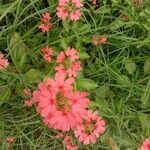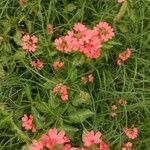| Therapeutic use
|
Antineoplastic agents (aerial part), Neoplasms (aerial part), Abortifacient agents (root), Anemia (root), Antirheumatic agents (root), Cough (root), Dyspepsia (root), Edema (root), Helminthiasis (root), Hemorrhoids (root), Leprosy (root), Leprosy, lepromatous (root), Lymphadenitis (root), Pain (root), Paralysis (root), General tonic for rejuvenation (root), Sexually transmitted diseases (root), Skin diseases (root), Urinary bladder calculi (root), Urination disorders (root), Reduced salivation (root), Malabsorption syndromes (root), Adenopathy (unspecified), Antiseptic (unspecified), CNS stimulant (unspecified), Cough (unspecified), Diaphoretic (unspecified), Headache (unspecified), Leprosy (unspecified), Paralysis (unspecified), Piles (unspecified), Rheumatism (unspecified), Tumor (unspecified), Tumor(Abdomen) (unspecified), Vermifuge(Veterinary) (unspecified), Wound (unspecified), Beriberi (unspecified), Diuretic (unspecified), Dyspepsia (unspecified), Flatulence (unspecified), Narcotic (unspecified), Abortive (unspecified), Apertif (unspecified), Fungicide (unspecified), Oxytoxic (unspecified), Anodyne (unspecified), Astringent (unspecified), Gastrotonic (unspecified), Poison (unspecified), Purgative (unspecified), Sudorific (unspecified), Vesicant (unspecified), Alterative (unspecified), Abortifacient agents (unspecified), Amenorrhea (unspecified), Anemia (unspecified), Anorexia (unspecified), Anthelmintics (unspecified), Antifungal agents (unspecified), Anti-inflammatory agents (unspecified), Appetite stimulants (unspecified), Bronchitis (unspecified), Colic (unspecified), Digestive system diseases (unspecified), Elephantiasis (unspecified), Endophthalmitis (unspecified), Expectorants (unspecified), Fever (unspecified), Gastrointestinal diseases (unspecified), Helminthiasis (unspecified), Hemorrhage (unspecified), Hemorrhoids (unspecified), Hepatomegaly (unspecified), Hypohidrosis (unspecified), Narcotics (unspecified), General tonic for rejuvenation (unspecified), Scabies (unspecified), Sexually transmitted diseases (unspecified), Toothache (unspecified), Urinary bladder calculi (unspecified), Vitiligo (unspecified), Reduced salivation (unspecified)
|


